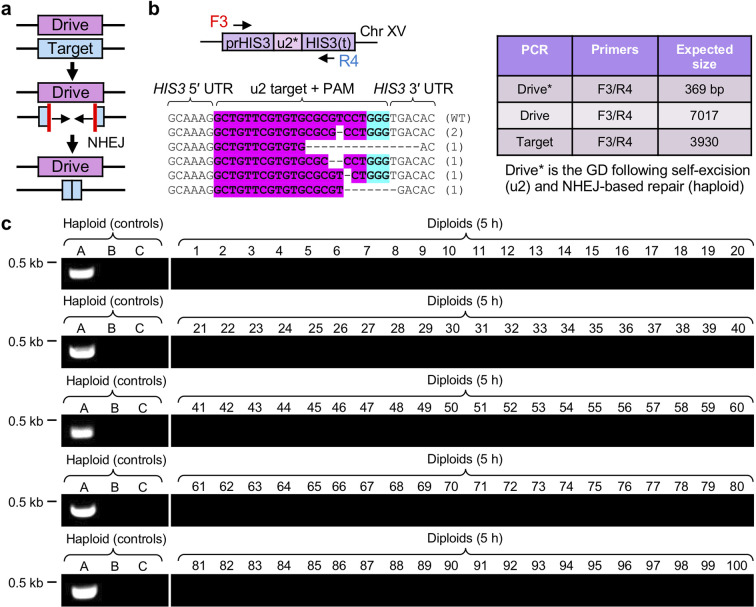Fig. 2.
Homology-directed repair is the primary mechanism for GD action compared to NHEJ. (a) Schematic of the potential for NHEJ-based repair of the target allele that would prevent HDR-based repair and successful propagation of a GD. (b) Generation of a control allele in a haploid strain using self-cleavage of Cas9 and artificial u2 sites. The GD haploid strain from Fig. 1 (GFY-2383) was activated and a plasmid expressing sgRNA(u2) (pGF-V809) was transformed with no additional donor DNA. Surviving clonal isolates were obtained on SD-LEU medium and the HIS3 locus was analysed. The sample sequences obtained are illustrated for six independent isolates. The expected PCR product size for NHEJ-based repair within this target allele (designed control A) would equal 369 bp (for an isolate lacking a single base at the cleavage site). Use of the same primers to amplify the entire drive or target allele would result in a product of 7017 and 3930 bp, respectively. (c) From 47 GD diploids tested (Fig. 1), 1 to 3 isolates (100 in total) were obtained at random that were resistant to G418, had lost the target allele (sensitivity to SD-HIS plates) and were diploid (via the mating test, see Fig. S3). For all strains, the HIS3 locus was also examined by diagnostic PCR (Fig. S5). Vertical white lines were added for clarity. Control B and control C (haploid) strains from Fig. 1 were used.

